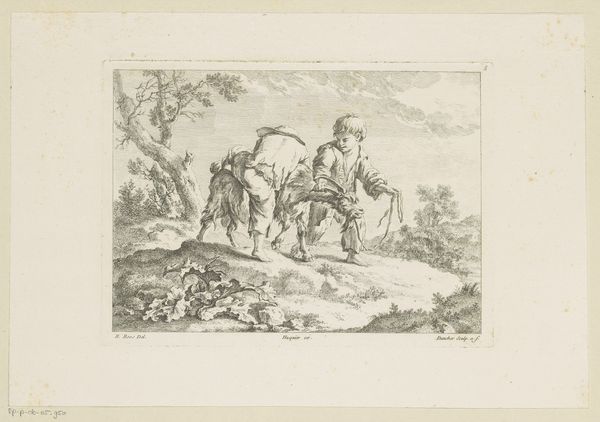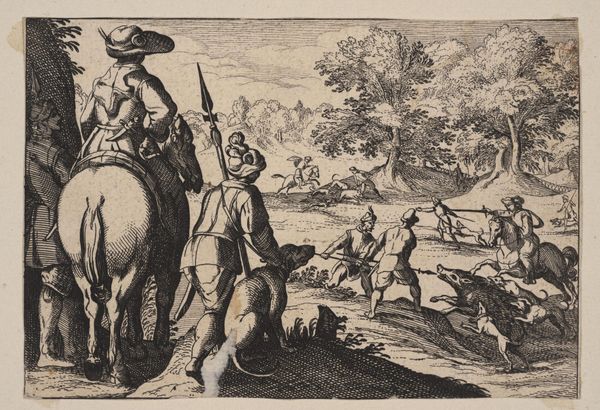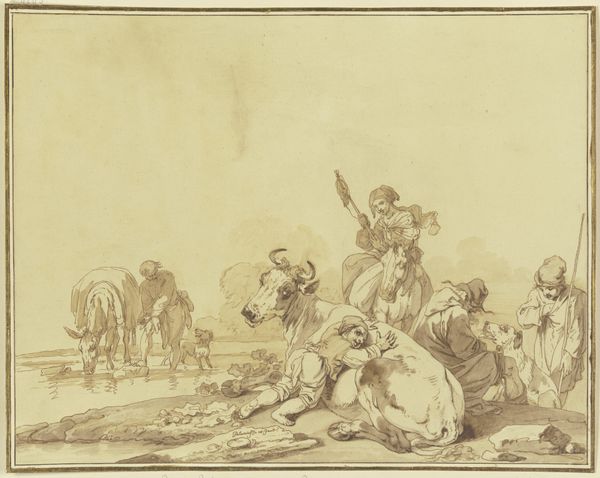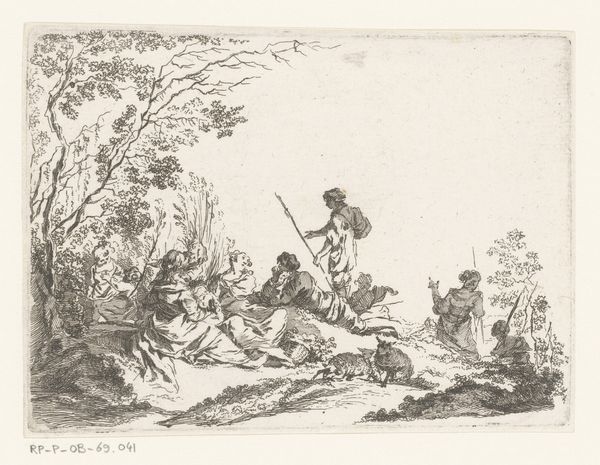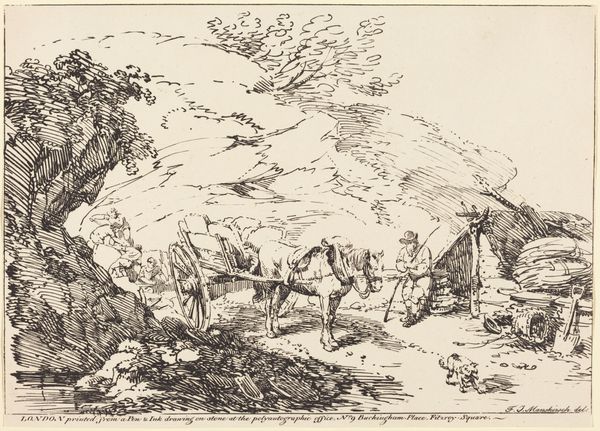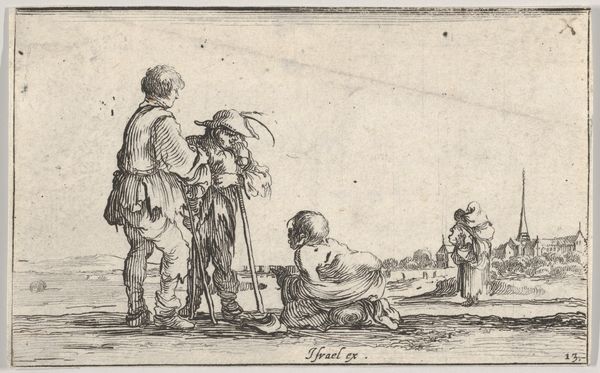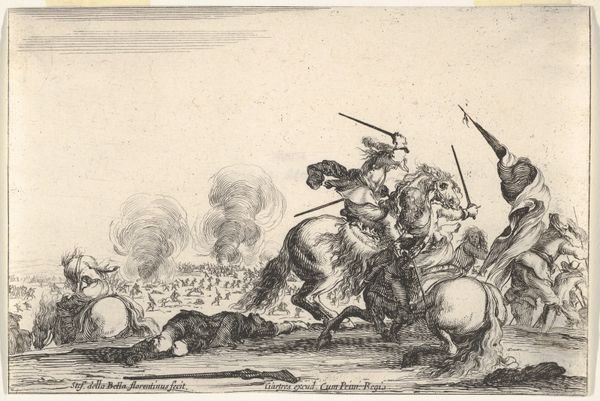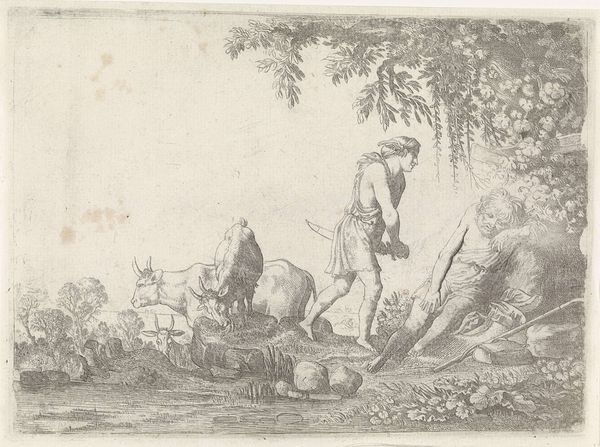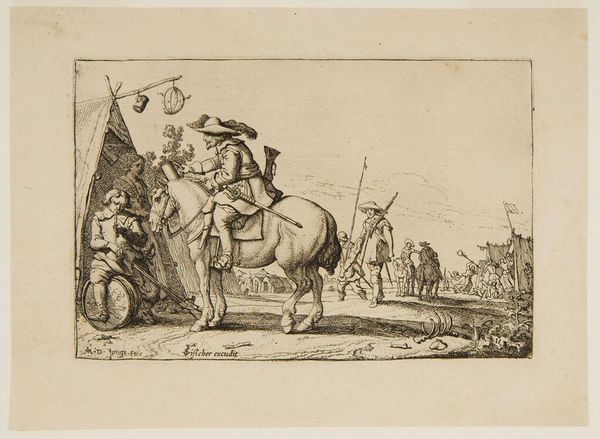
drawing, print, etching
#
drawing
#
ink drawing
#
baroque
#
animal
# print
#
etching
#
landscape
#
figuration
#
men
#
genre-painting
Dimensions: Sheet (trimmed): 7 1/2 × 10 11/16 in. (19.1 × 27.2 cm)
Copyright: Public Domain
Editor: So, this is "Le Florentin à la chasse" by Stefano della Bella, an etching made sometime between 1649 and 1659. It's teeming with life, but in this grayscale palette, the etching feels almost...delicate, would you agree? What do you see in the relationships within the image? Curator: Formally, observe how Della Bella uses line weight and density to create spatial recession. Note the variation of hatching that sculpts the forms. Look at the texture of the foliage, for instance. What about the contrast contributes to the image's dynamics? Editor: The interplay between the very fine, sparse lines in the sky, creating a sense of openness, against the dense, almost chaotic lines detailing the trees really catches my eye. What purpose do you believe is served by juxtaposing the clear open area with the intricate undergrowth? Curator: Precisely. Consider how the artist's handling of the etched line itself contributes to a sense of movement and liveliness, in contrast with the static nature of printmaking. Examine how light is suggested and manipulated through the varied densities of line work. What happens to your eye when tracing a line and then changing focus and how is this affecting your emotional read of the image? Editor: I can really see what you mean; following those lines activates my senses. Thinking about those contrasts, light and dark, action and rest, I see those oppositions replicated everywhere I look now. I hadn't noticed that before! Thank you. Curator: A close viewing reveals how integral technical choices are to the experience and appreciation of the work. Focusing our viewing skills and questioning composition provides us keys for a wider viewing capability and understanding of art as a whole.
Comments
No comments
Be the first to comment and join the conversation on the ultimate creative platform.
